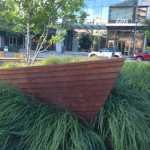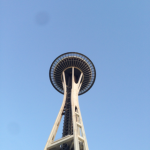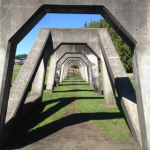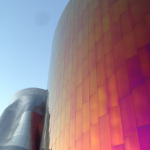Staying true to who I am — and figuring out who I am — means choosing what to say yes to and what to say no to. My choices shape everything.
Alexander Hamilton, protagonist in the Broadway hit Hamilton (and founding father of the United States), finds himself in a tricky situation:
I hadn’t slept in a week.
I was weak, I was awake.
You’ve never seen a bastard orphan
More in need of a break.
Longing for Angelica.
Missing my wife.
That’s when Miss Maria Reynolds walked into my life…
And he slept with her, over and over, when he knew he should “say no to this”:
I wish I could say that was the last time.
I said that the last time. It became as pastime.
A month into this endeavour I received a letter
From a Mr. James Reynolds, even better…
And so the blackmail begins and eventually the truth must come out. When accused of embezzling government funds he has to come clean to Jefferson, Madison and Burr:
She courted me.
Excorted me to bed and when she had me in a corner
That’s when Reynolds extorted me
For a sordid fee.
I paid him quarterly.
I may have mortally wounded my prospects but my papers are orderly!
Jefferson and Madison are clear: “The people won’t know what we know.” His confidence will not be betrayed. Burr teases him: “Alexander, rumors only grow. And we both know what we know.”
Yet Hamilton makes the decision to sabotage his dream of being president of the United states–he comes clean and writes the Reynolds Pamphlet, making his torrid affair explicit. He destroys his dream, his wife and his mistress. And, of course, Jefferson, Madison and Burr celebrate:
He’s never gon’ be present now.
Never gon’ be president now.
That’s one less thing to worry about…
And they are stunned:
Did you ever see somebody ruin their own life?
I, too, am stunned, by the contrast in his behaviour: this inability to say no to Maria Reynolds and his ability to say yes to coming clean. And he comes clean not only with his rivals Jefferson, Madison and Burr (and their gentlemen’s agreement to keep it secret), but he makes the whole affair public.
He couldn’t say no — and it reshaped everything. And then he said yes — and that reshaped everything. What we say yes to and no to shapes our personal and professional lives, and the endless intertwining of our personal and professional lives
I’ve said yes to figuring out what compels me to dig into Hamilton over and over again. I’ve said yes to writing about it to see the possibilities for my work and life. This time, I receive the gift of noticing what I say yes to, and what I say no to. It shines a light on the choices I make that make me the kind of person I am. I am of my own making.
Thank you, Lin-Manuel Miranda.
What did you say no to that changed your life?
This is the third post in a series that touch on the Broadway hit Hamilton. It started with Room where it happens, followed by Stay in it.







